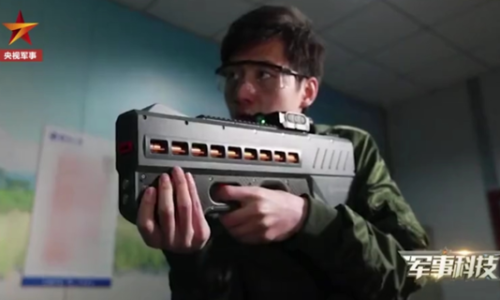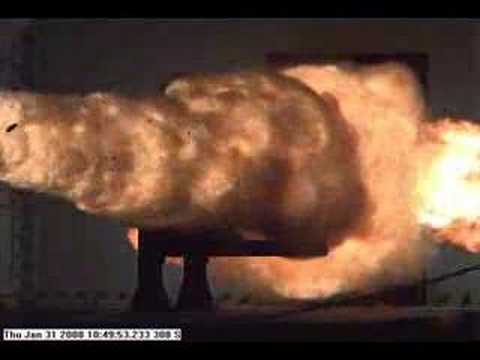Compared to conventional powder guns, railguns use electromagnetic energy to propel projectiles at up to seven times the speed of sound, and up to ten times the range of traditional guns.
They are purely kinetic weapons, relying on hypersonic projectile velocities to inflict damage rather than explosive payloads.
Last November, the U.S. Navy announced that it was pulling the plug on its planned railgun program, sending 15 years of development and $500 million in research and development (R&D) costs down the drain.
Per the Navy’s official statement, they said they intended to re-focus their R&D efforts toward developing hypersonic missiles and directed energy weapons, as these weapons are already seeing limited deployment worldwide today.
BAE Systems was the primary contractor on the U.S. Navy’s attempt to field a railgun. The Army contracted with General Atomics to research land-based options, such as integrating a gun on a tank or for long-range artillery.
But the Navy soured on the technology and cut off funding in 2021, and the Army contract expired at about the same time.
Japan’s Ministry of Defense is looking to partner with the United States on a railgun program that could be used to counter hypersonic weapons.
Fast forward to now. This is what we’re testing right now.
Japan
This is the translation of the post below.
#防衛装備庁 , in cooperation with #海上自衛隊 , installed #レールガン on a ship and conducted the world’s first offshore firing test of a railgun. We are promoting the early commercialization of railguns to protect ships from air and sea threats with high-velocity bullets that surpass conventional artillery.
#防衛装備庁 は、#海上自衛隊 との連携により艦艇に #レールガン を搭載し、世界初となるレールガンの洋上射撃試験を実施しました。従来の火砲を凌駕する高速度の弾丸で、空や海上の脅威から艦艇を守るため、レールガンの早期実用化を推進しています。 pic.twitter.com/mQtt1LhH5C
— 防衛装備庁 (@atla_kouhou_jp) October 17, 2023
Meanwhile in China
According to the South China Morning Post, the Chinese Navy has built and tested a powerful coil gun capable of launching a 274 lb projectile at over half the speed of sound.
The Chinese navy is reportedly testing the planet’s most powerful coil gun – a type of electromagnetically powered weapon capable of launching projectiles with very high speed and accuracy.
In a firing test revealed to the public for the first time, the electromagnetic launcher accelerated a 124kg (273lbs) projectile to a speed of 700km/h (435mph) in less than 0.05 seconds, according to scientists involved in the project.
It was the heaviest known projectile to be used in a coil gun experiment. While the exact dimensions and maximum range of the weapon remains classified, a shell moving at such speeds could hit a target several kilometres away.
Chinese researchers said that they are trying to solve railgun development problems by intensifying weapon trials and testing innovative solutions such as applying liquid metal on rails to reduce firing wear and using special coatings to reduce damage from repeated firings.
The researchers said that their designs have unique features not found in US railgun models, such as the absence of an extra muzzle device to reduce electric flashes. They also stated that their designs must be fired non-stop and at top energy levels, and that the intensity and scale of these tests would far exceed any of those conducted previously.
Handguns, too

The future of handheld weaponry is apparently here as China reports it has created a portable handheld electromagnetic railgun.
The railgun, which is said to be designed for riot control purposes, not killing people, “marks a development trend for future weapons,” reports Global Times.
According to a program on China Central Television (CCTV), the gun uses nine lithium-ion coils to accelerate coin-shaped projectiles, which are stored in a magazine behind the coils.
